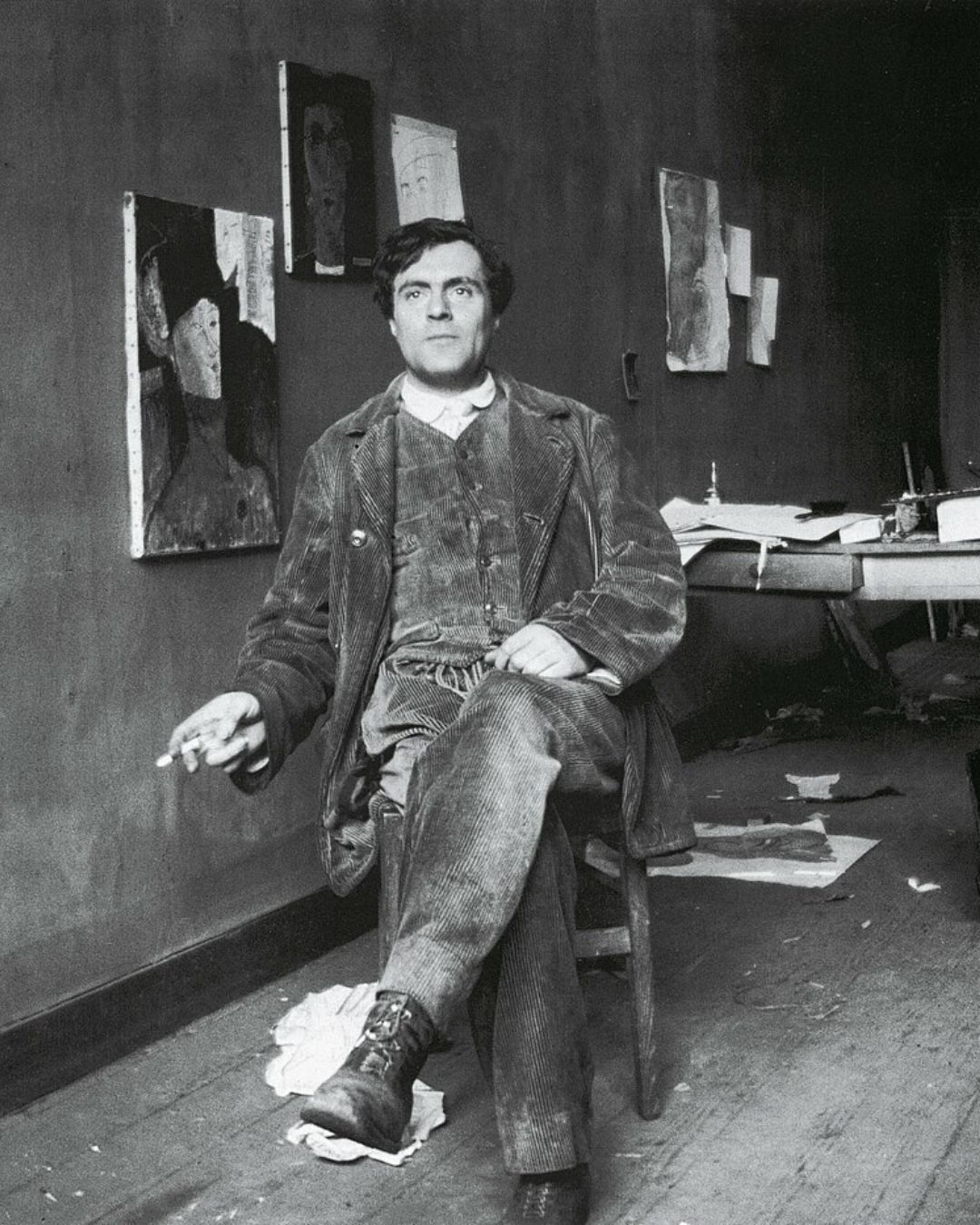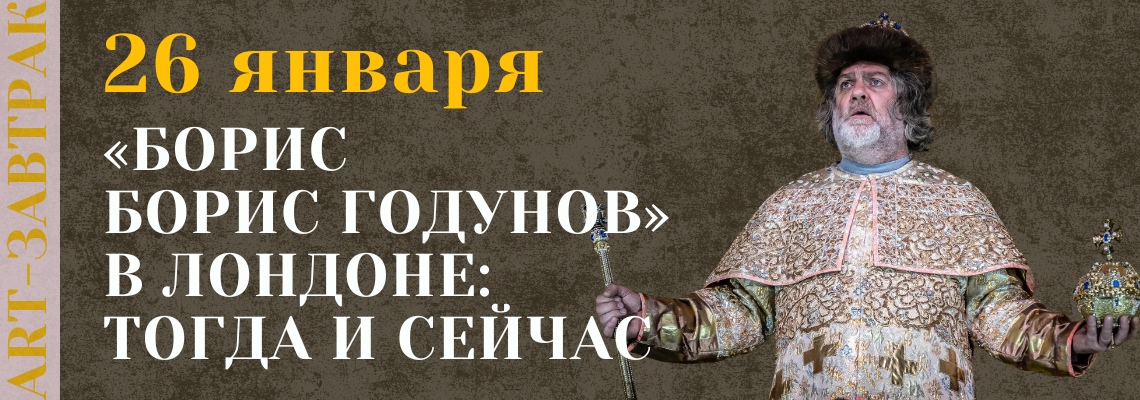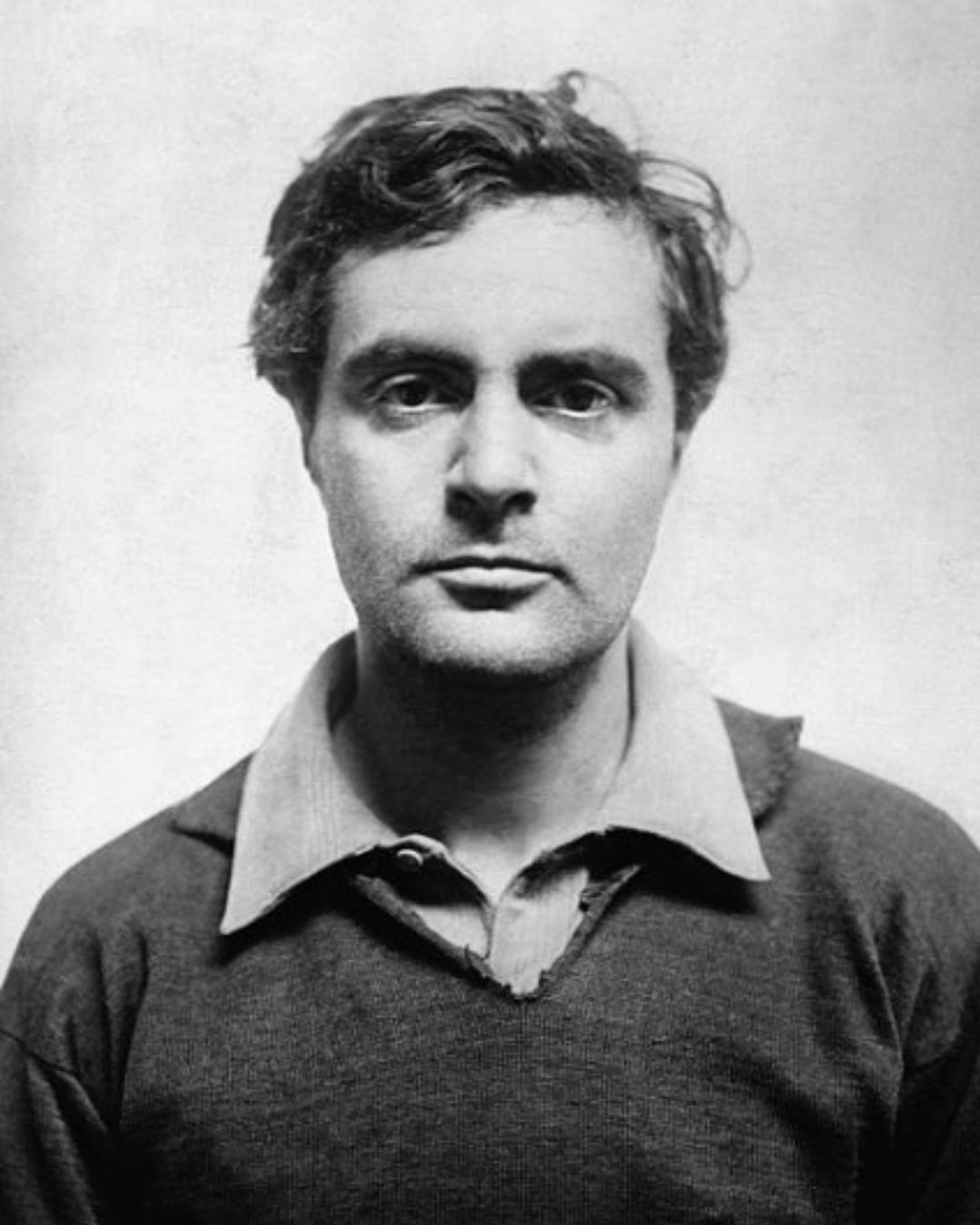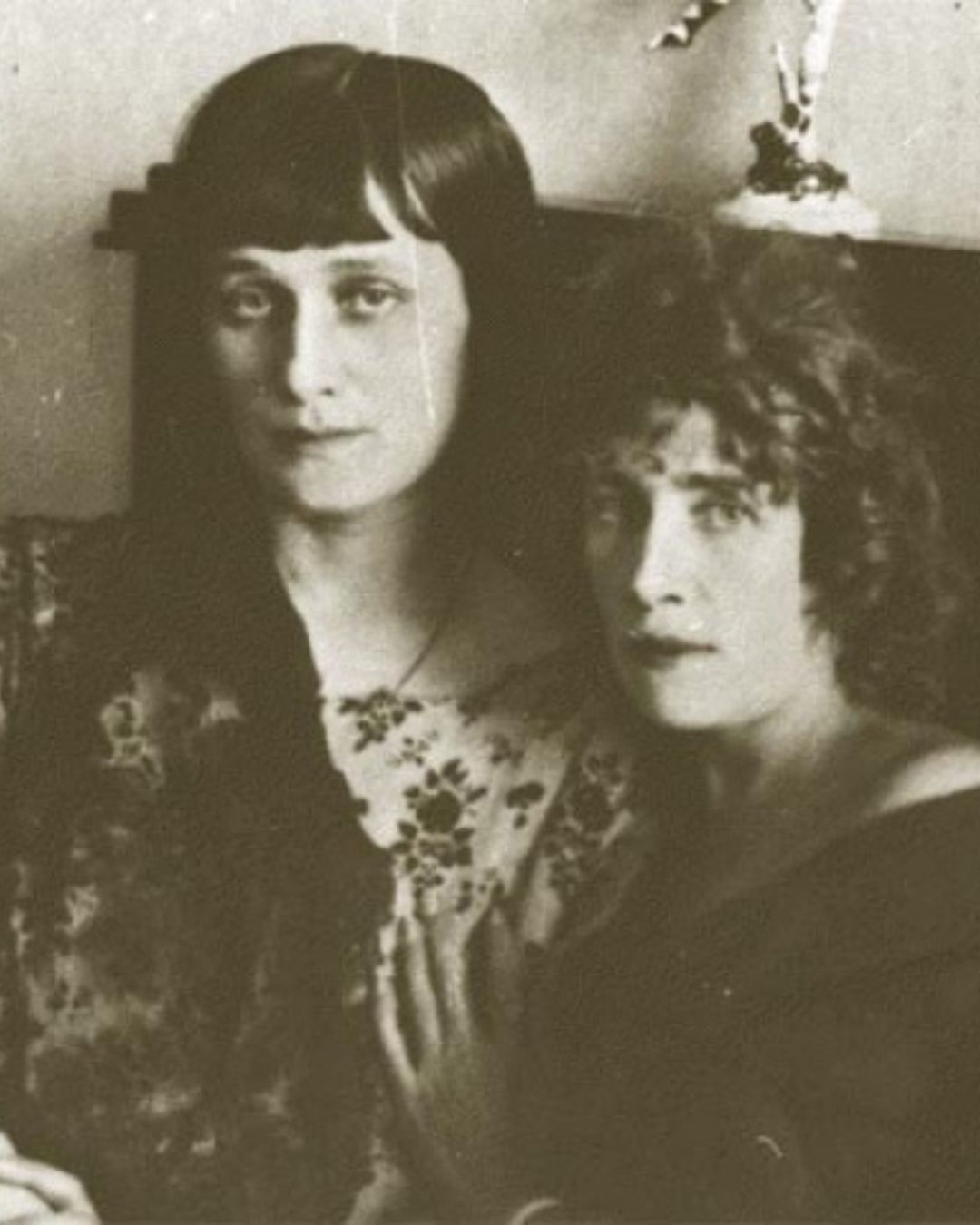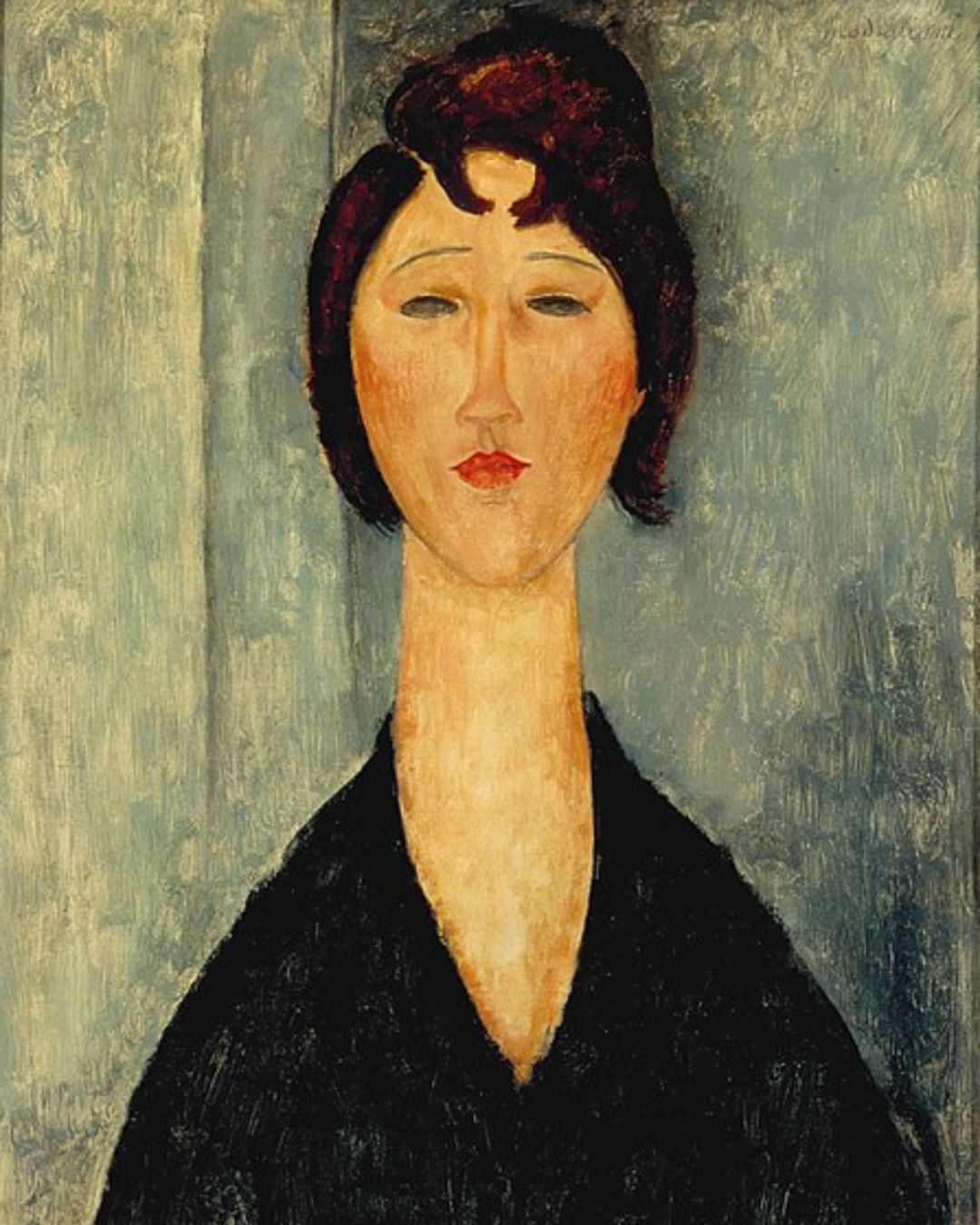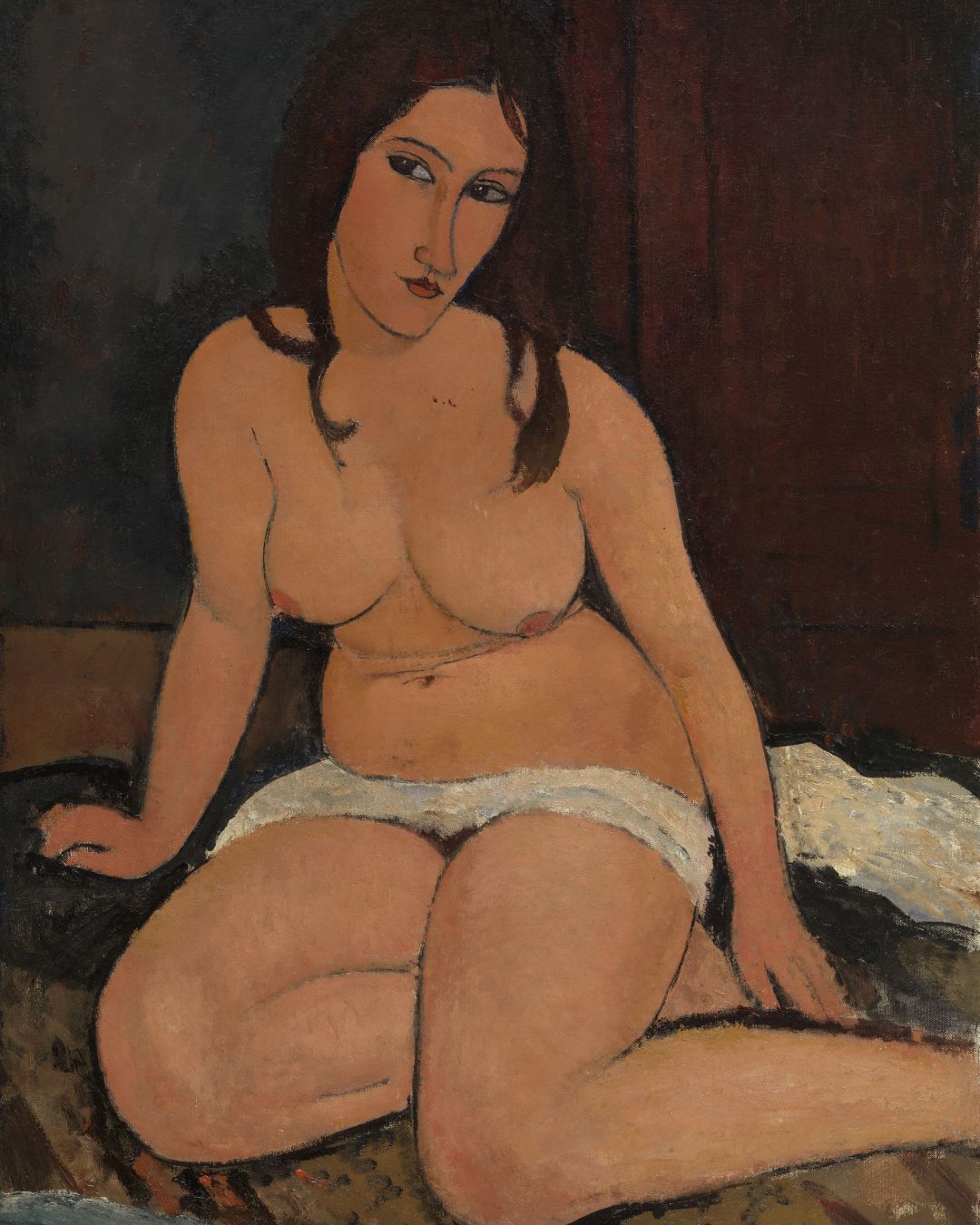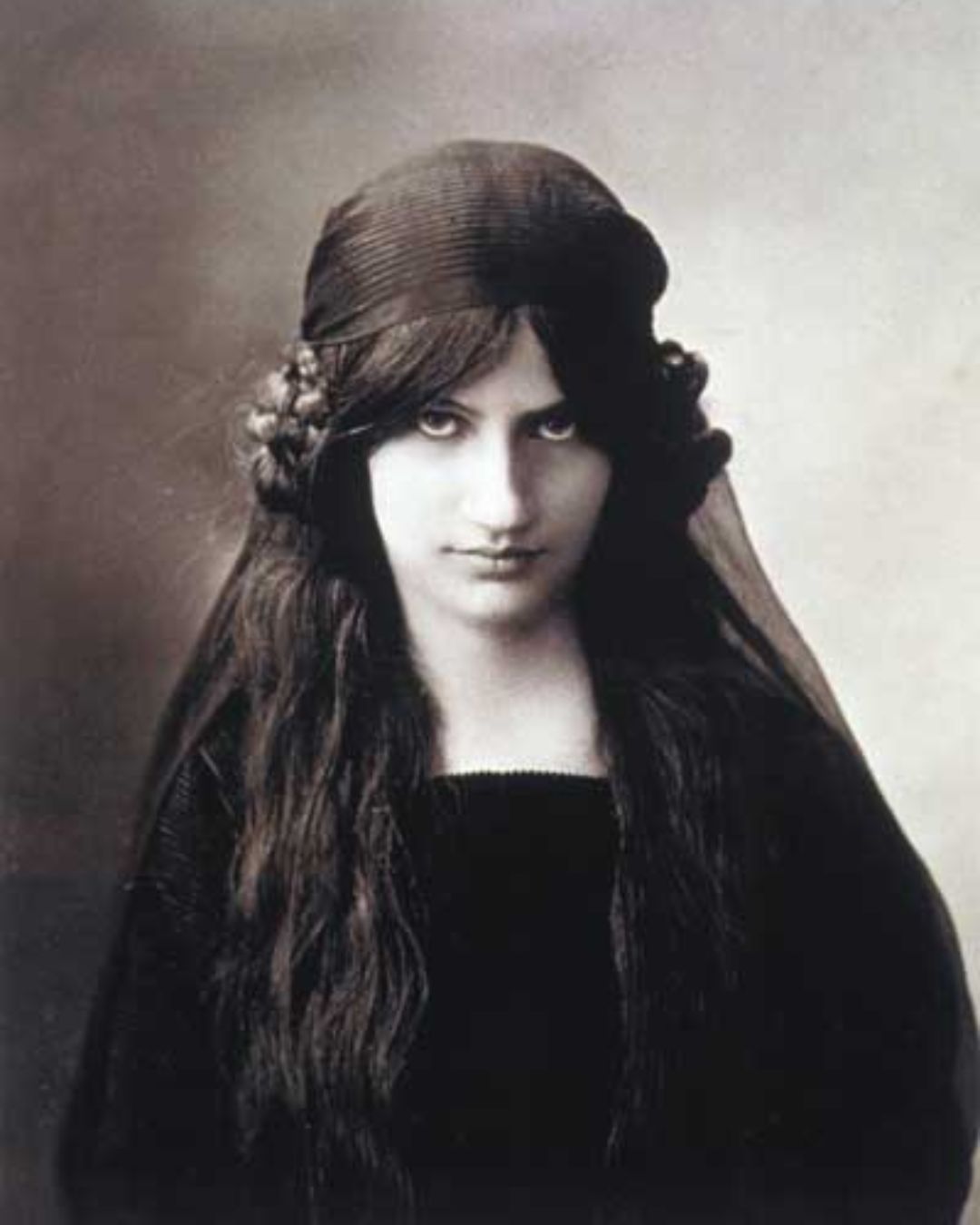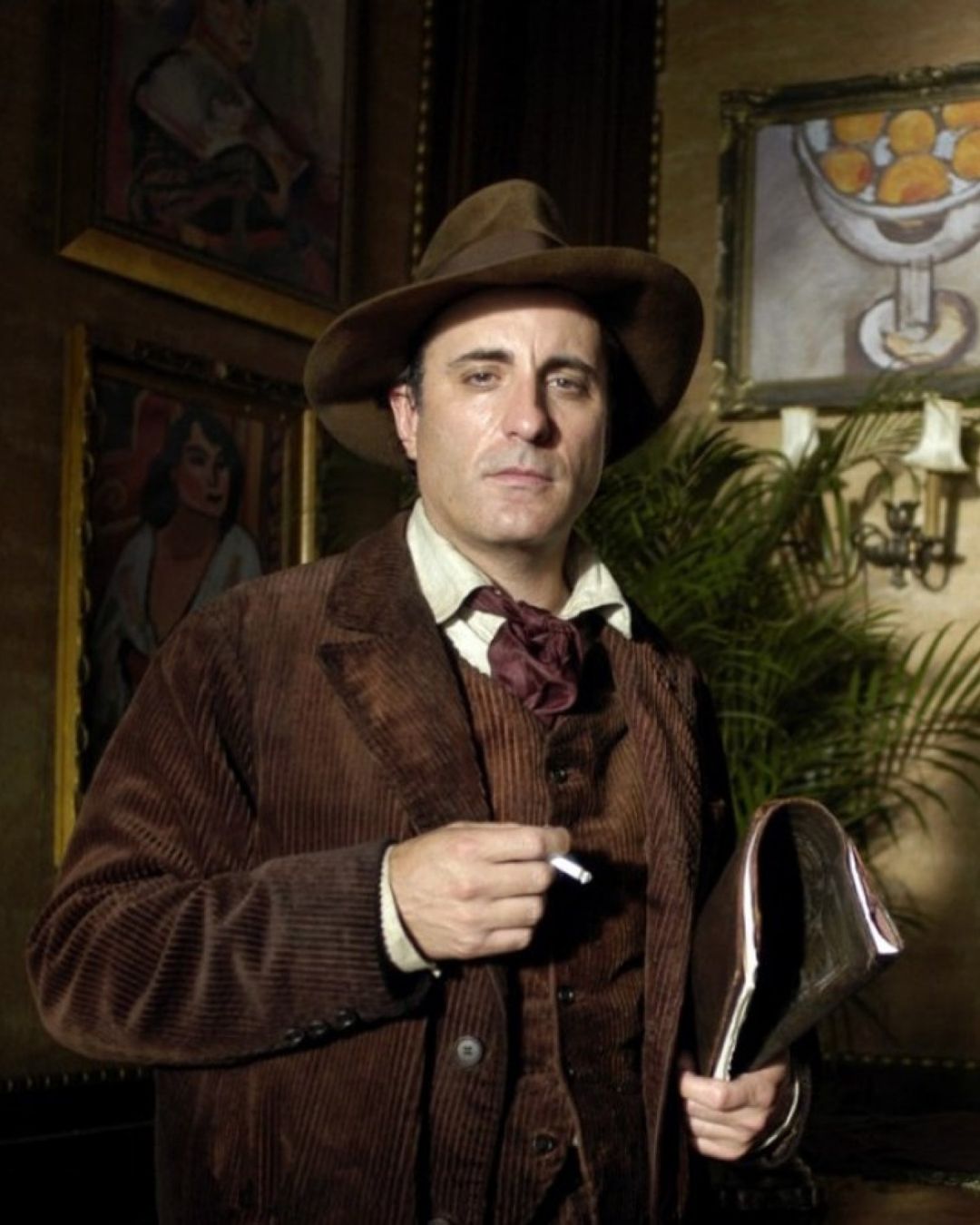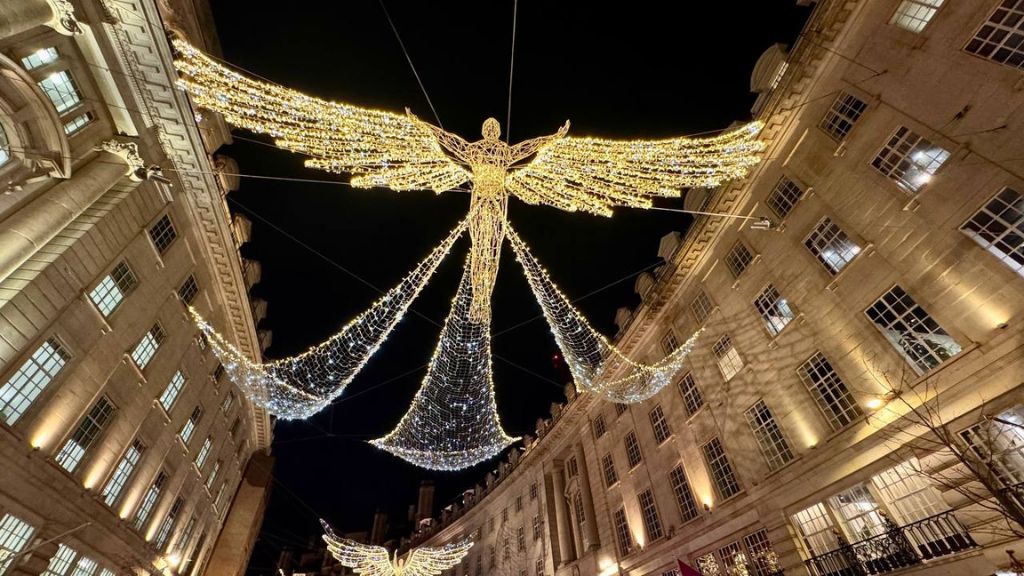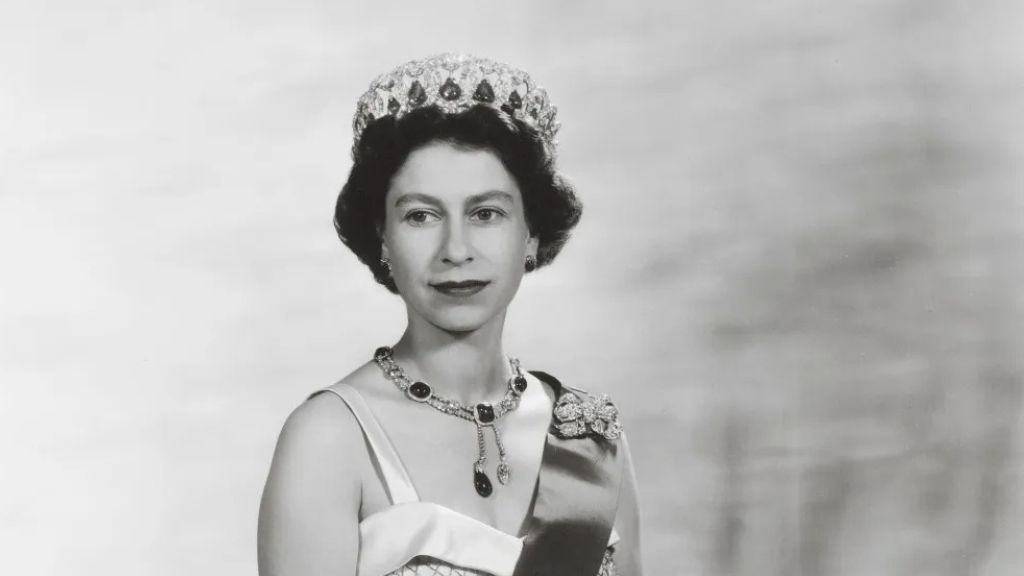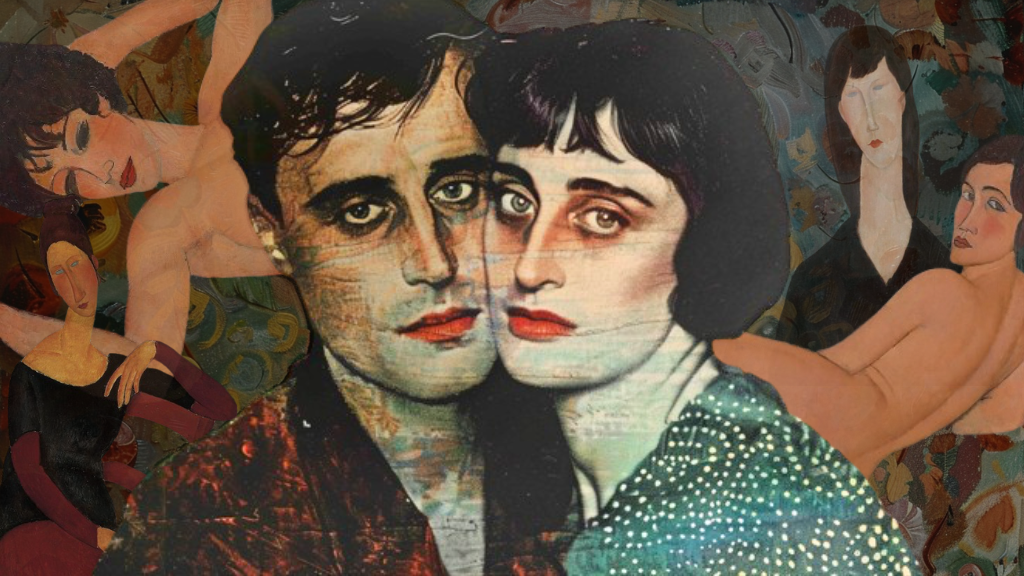
Amedeo Modigliani and Anna Akhmatova: the enigmatic nude romance
The romance between Amedeo Modigliani and Anna Akhmatova continues to spark debates – some consider their relationship a mere fiction, while others find evidence of a great love. Afisha.London magazine could not overlook such an enigmatic and rumour-laden story, and decided to delve into the nature of the bond between the Silver Age Russian poetess and the Italian artist who celebrated the beauty of the nude female form.
The Glamour and Misery of Modigliani
One of the most handsome artists of the 20th century, Amedeo Modigliani, was born on July 12, 1884, into a Jewish family in Livorno, the second-largest city in Italy’s Tuscany region after Florence. The world greeted Amedeo with hostility. Before the boy’s birth, his father, Flaminio Modigliani, a prosperous merchant dealing in wood and coal, went bankrupt. Officials came to inventory the family’s possessions while the artist’s mother, Eugenia, lay in labour.
According to Italian law, the birthing mother’s bed was considered inviolable, so all the household’s most valuable items were piled onto the suffering woman. Throughout his life, Amedeo would recall his mother with reverence. Not only did she give birth to him under such dire conditions, but she also opened a private school to earn money and support her children, a venture that became quite popular. The artist seldom mentioned his father – his maternal grandfather, who had moved from Marseille to live with the Modiglianis, took over the upbringing of the grandchildren.
- Modigliani’s birthplace in Livorno. Photo: Lucarelli, CC BY-SA 3.0, via Wikimedia Commons
- Amedeo Modigliani in his studio in Paris, 1915. Photo: French art dealer Paul Guillaume (1891–1934), Public domain, via Wikimedia Commons
Amedeo grew up as a severely sickly child, having suffered from pleurisy and typhus in his childhood, and tuberculosis manifested at the age of 16. Legend has it that during a feverish delirium caused by typhus in 1898, the 14-year-old boy muttered about masterpieces of visual art. Fearing for her son’s life, his mother, upon his recovery, enrolled him in the local Academy of Arts. Thus, Amedeo embarked on his destined path.
In Florence, he studied under the great Italian painter Giovanni Fattori, visited churches and museums, and immersed himself in Renaissance art. In Venice, he attended the Institute of Fine Arts and developed a fascination with the sculptures of the French impressionist Auguste Rodin. During this period, Europe was captivated by spiritualist séances, which Amedeo attended as frequently as art temples. It was also in Venice that he first experimented with drugs, a dependency that would last his entire life.

Modigliani, Pablo Picasso and André Salmon in Paris, photo taken by Jean Cocteau in 1916. Photo: Amedeo Modigliani (1884–1920), Public domain, via Wikimedia Commons
The allure of Paris drew Modigliani, and he first arrived in the city of love in 1906. Enrolling in the Académie Colarossi, he initially lived extravagantly, but soon had to temper his appetites. Amedeo moved to a cheap studio in Montmartre and, along with post-impressionist Maurice Utrillo, spent his days in drunken revelries and scandalous escapades. His bohemian lifestyle became legendary, but while other outrageous artists and Modigliani’s main rival, Pablo Picasso, gained fame, Amedeo’s talent went unrecognized until his death.
Read also: Anna Akhmatova in the UK: A Poetess, Muse and Femme Fatale
Due to a constant lack of money, Modigliani couldn’t pay for his rented accommodation and frequently moved, leaving his paintings as payment. He was given the nickname “Modi,” which translates from French as “cursed.” Yet, he remained faithful to art. In 1909, his first significant commission was the painting “Amazon,” where Amedeo depicted the glamorous Baroness Marguerite de Hasse de Villers. Even then, Modigliani’s extraordinary talent for highlighting female beauty and conveying powerful eroticism through his drawings began to emerge. Could Modigliani or anyone around him have imagined that this painting would be sold a little more than 100 years later for almost 26 million dollars (in 2013, it was auctioned off for 25,925,000 USD at Sotheby’s)?
- Amedeo Modigliani ‘The Amazon’, 1909. Photo: Amedeo Modigliani, Public domain, via Wikimedia Commons
- Amedeo Modigliani, 1918. Photo: gettyimages.com, Public domain, via Wikimedia Commons
“You are an obsession to me…”
This is how young Anna Akhmatova encountered Modigliani. In the summer of 1910, the budding poetess and her husband, Nikolai Gumilev, came to Paris for their honeymoon, just as Amedeo, full of vigour, returned from his hometown of Livorno, where he had been under the care of his relatives. They met at the Parisian Café de la Rotonde, where Nikolai brought his young wife. Amedeo appeared before the elegant and youthful Anna in absurd corduroy pants and a yellow shirt, but his ability to present himself and converse with women captivated Akhmatova. Nikolai Gumilev, on the other hand, was irritated by the artist from the start — he would later refer to him as a “drunken monster” in his 1918 notes. During that short trip, Anna saw the artist only a couple of times, but the encounter clearly affected them both.
- Anna Akhmatova, 1921. Photo: M.Nappelbaum, CC BY-SA 4.0, via Wikimedia Commons
- Akhmatova and Olga Glebova-Sudeikina, c. 1917. Photo: Anonymous photographer from Russian Empire (before 1917)Public domain image (according to PD-RusEmpire), Public domain, via Wikimedia Commons
Later, Akhmatova would say that the infatuated Modigliani wrote her letters throughout the following autumn and winter, calling her his obsession. However, researchers question the authenticity of this correspondence. In 2006, a literary study by philologist Alla Marchenko was published in the journal “Friendship of Peoples,” asserting that Akhmatova never received letters from Modigliani, as no biographer in Italy or Russia ever found them.
Moreover, Modigliani detested writing and sending letters, even to his beloved mother, who supported him financially. He often said that he and letters were incompatible. This leaves the possibility that the passionate words Amedeo generously showered upon the poetess during their initial meetings were later transformed by Anna into lines from non-existent letters — sounding more poetic and pleasing for storytelling.
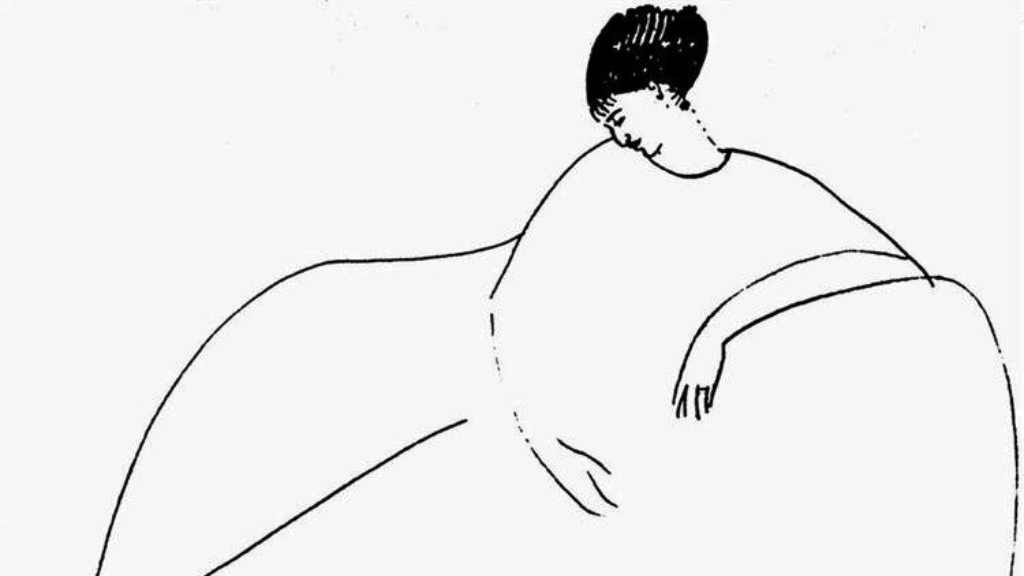
Akhmatova’s drawing by Modigliani, 1911. Photo: Амедео Модильяни, Public domain, через Викисклад
A year later, Akhmatova returned to Paris alone — the official reason being Diaghilev’s “Russian Seasons,” and this time a romance between the two artistic geniuses likely blossomed. The poetess recalled how they strolled through the Luxembourg Gardens, unable to sit and rest because all the benches required payment, and the impoverished artist had no money for such luxuries.
However, Anna was fascinated by how Modigliani viewed the world — they discussed everything, frequently visiting the Louvre, where the artist shared his fascination with Ancient Egypt. Akhmatova loved giving him bouquets of roses, which Amedeo found enchanting. In her accounts, Akhmatova denied any relationship beyond the platonic, yet the fruit of their brief passion was a dozen drawings of the poetess in the nude.
Invalid slider ID or alias.
The Fate of the Nude Drawings of Akhmatova
The inspiration for the drawings came from Modigliani’s favourite themes — Ancient Egypt and caryatids, statues-columns depicting draped female figures. Anna, with her stature and chiselled facial features, resembled an Egyptian queen, and Amedeo was delighted to find the perfect form in the Russian poetess. Whether Akhmatova was being coy when she claimed that the artist drew her not from life, but at home, and then gave her the drawings — we may never know for sure. There were 16 drawings in total, and their fate still intrigues art world researchers.
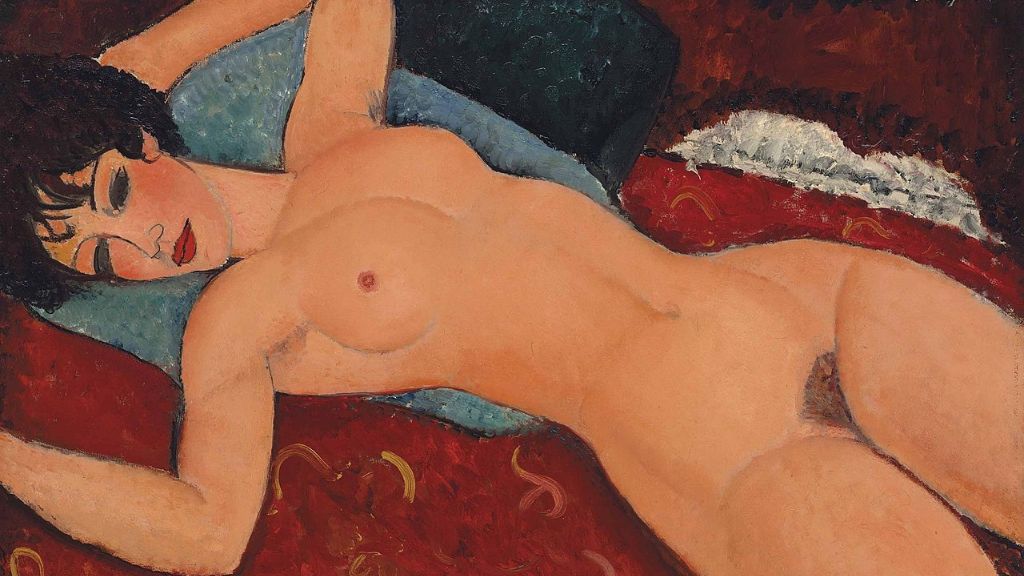
‘Nu Couché’ (Reclining Nude), 1917-1918 гг. Photo: Амедео Модильяни, Public domain, через Викисклад
Upon Akhmatova’s return to St. Petersburg (Russia), the story with Modigliani ended, and the poetess had no time to miss the impoverished and extravagant Amedeo. Boris Anrep, who became one of the most famous mosaicists in Great Britain, entered Anna’s life, along with a series of husbands and terrible events amidst the First and Second World Wars. When she learned of Modigliani’s early death and that his work was posthumously exalted to the heavens, declaring him the greatest artist of the 20th century, on par with Botticelli, she was extremely surprised. Then details of their relationship emerged, which she shared only with her closest friends. Naturally, everyone was interested in the story of that dozen drawings, which had suddenly become fabulously expensive, and Akhmatova told two versions of their fate.
- ‘Portrait of a Young Woman’, 1918 г. Photo: Amedeo Modigliani, Public domain, via Wikimedia Commons
- ‘Seated Nude’, 1917. Photo: Amedeo Modigliani, CC0, via Wikimedia Commons
In one version, the drawings were kept at the poetess’s house in Tsarskoye Selo (near St.Petersburg, Russia), but after the Bolsheviks executed her husband Nikolai Gumilev, the house was looted, and some revolutionary sailors found Modigliani’s masterpieces and used them for cigarette papers. In another version, the drawings disappeared during the the Siege of Leningrad. Some biographers suggested a third version, where Anna herself destroyed these drawings because in her nudity she became too close and comprehensible, and the poetess wanted to remain an eternal enigma for all.
However, one drawing did survive — until Anna’s death, it hung in her living room, where guests could see it and listen to the mesmerizing story of her encounters with the legendary Modigliani. This sketch, however, evoked mixed feelings. Poet Alexander Kushner, who saw Akhmatova in her later years, described his impressions thus — though he praised the drawing, Anna resembled a seal and seemed “washed up on the shore like a wave.” In 1993, a sensation occurred — at a Modigliani exhibition in Venice, an art historian identified Akhmatova’s likeness in twelve nude works out of a hundred. This discovery so shocked the art world that about 150 paintings and sculptures by Modigliani, featuring the Russian poetess’s features, were found.
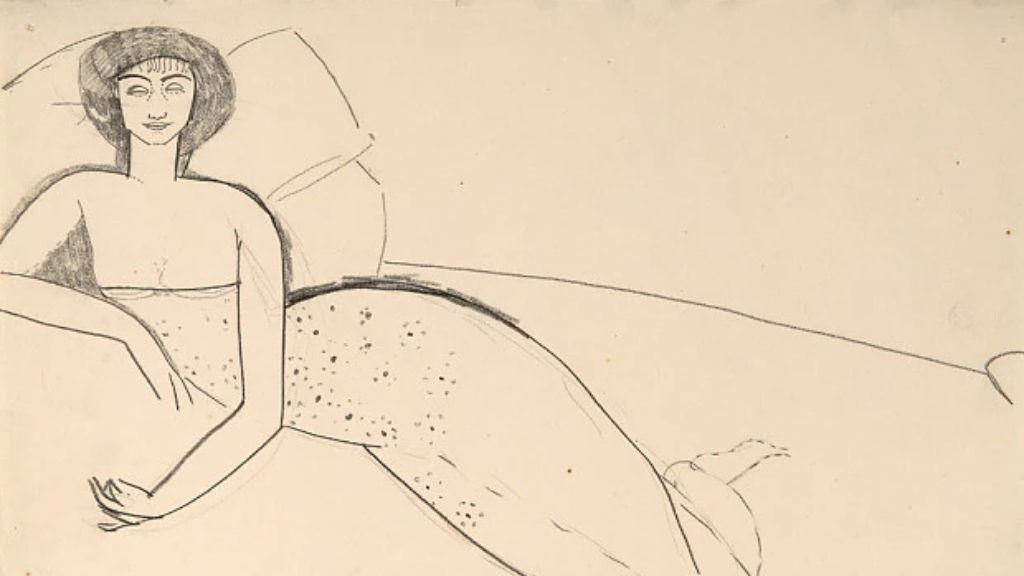
Akhmatova in a drawing by Modigliani, c. 1911. Photo: Sotheby’s
Modigliani Exhibition in London
The bright, reckless, and untamed life of Amedeo ended at 35 — on January 24, 1920, he died of tuberculous meningitis, penniless and unrecognized. He left behind a rich legacy of paintings and sculptures in his unique style, an unofficial wife and artist Jeanne Hébuterne, who became his last love, and their young daughter Jeanne. After Modigliani’s death, the grief-stricken and pregnant Hébuterne threw herself out of a window, and her words that her beloved genius would find fame posthumously became prophetic. The tragedy of the artist’s final years and his rivalry with Pablo Picasso are depicted in the 2004 British film “Modigliani,” where the role of the beautiful and neurotic Amedeo was played by Andy Garcia.
- Jeanne Hebuterne, 1916. Photo: See page for author, Public domain, via Wikimedia Commons
- Andy Garcia in “Modigliani,” 2004. Photo: Bauer Martinez Studios
The largest retrospective of Modigliani’s works took place in 2017 at the Tate Modern gallery in London. About 100 of the maestro’s works were exhibited, including 12 nude paintings, among them “Nu couché (sur le côté gauche)” / Nude (Lying on Her Left Side). After this exhibition, which ran in London from November 23, 2017, to April 2, 2018, this painting was moved to New York and almost immediately put up for auction at Sotheby’s. On May 14, 2018, it was sold for $157,159,000. This painting just fell short of another Modigliani masterpiece.
Earlier, in 2015, Modigliani’s painting “Nu couché” (Reclining Nude) was sold at Christie’s for $170 million, making it the third most expensive painting in the world after Picasso’s “Les Femmes d’Alger” and Leonardo da Vinci’s “Salvator Mundi”.
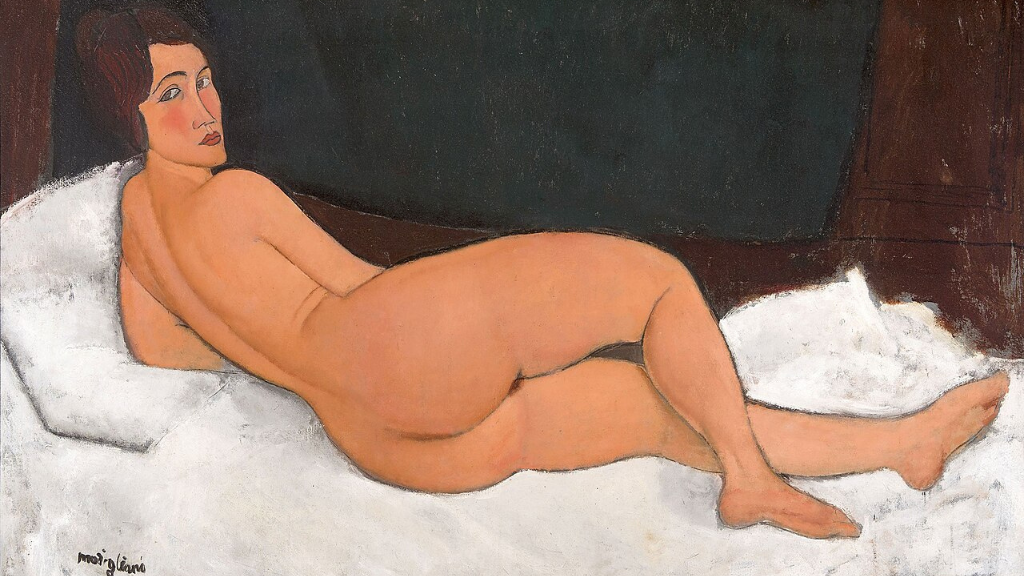
“Nu couché (Lying on Her Left Side), 1917. Photo: Amedeo Modigliani, Public domain, via Wikimedia Commons
These very paintings once caused a scandal at the artist’s solo exhibition in Paris in 1917, where the police deemed them indecent. Today, Modigliani’s portraits with elongated faces and pupil-less eyes, gazing straight into the soul, are the most valuable on the art market. The stylization of the silhouettes refers to archaic art, and the artist’s unique style conveys an unprecedented closeness to the model, almost a physical sensation of the body’s presence and the natural eroticism of the woman on the canvas.
Irina Lazio and Margarita Bagrova
Cover photo: Afisha.London / Midjourney
Read also:
Felix Yusupov and Princess Irina of Russia: love, riches and emigration
Pyotr Tchaikovsky in London: a journey of impressions, acclaim, and triumph
Exploring Malevich: Locations and Insights into His Revolutionary Art
SUBSCRIBE
Receive our digest once a week with quality Russian events and articles


